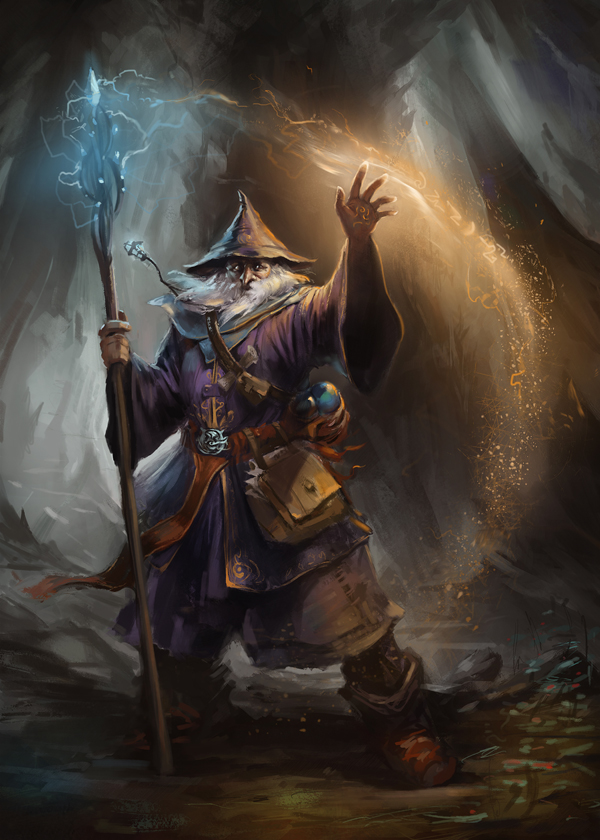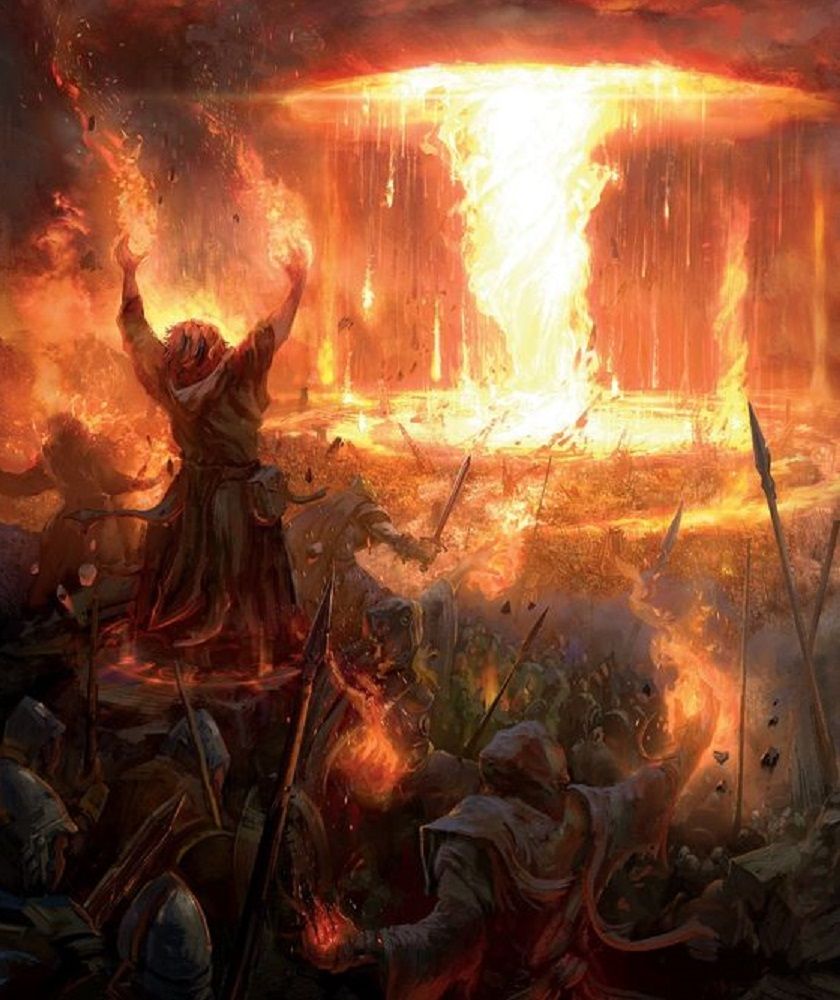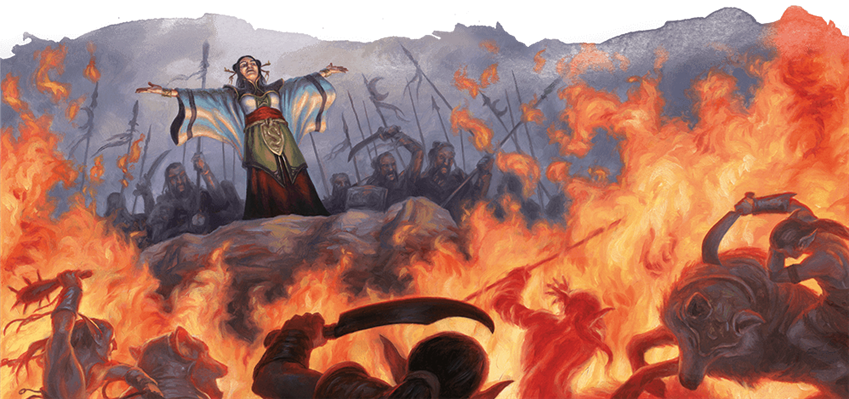The 5e Evocation Wizard. The first class for dnd 5e that really focused on the damage capabilities of the wizard. It’s level 2 ability is extremely useful for those that seek area damage. However, it gains nothing noteworthy again until level 14.
But few wizard subclasses match it for those looking for damage.
How I Am Evaluating Them
For those who have read my previous reviews, feel free to skip this. If you haven’t, welcome! This is going over how I evaluate how strong a class is. There are three things that I am reviewing in the in-depth guide. I look over how strong the subclass is in combat, how much utility it has, and, if applicable, its’ roleplay ability. This way everyone’s playstyle will be shown to fit their needs.
Now, when deciding if something is good for a guide, I look at what the subclass is trying to accomplish. Then look at how successful it succeeds in that task. For instance, in a previous article on the War Wizard, I concluded, attempts to make you a competitive front line. I then figure out how well that ability succeeds in letting you front line, as well as how soon it comes online.
If it is accomplished at level 2, then it is early game. Level 6 it is Early-Mid, Level 10 Late-Mid, and Level 14 is late game. I rate earlier tiers better as most Dungeon and Dragons Campaigns do not go beyond level 8. Without further a due, let start this review on the 5e Evocation Wizard.
Color Meaning
GOLD- “That’s gold Jerry! Gold!” If an ability is highlighted gold, then this means that this ability not only is what defines your subclasses but accomplishes it better than almost any other subclass. I rarely do Gold ratings, so definitely pay attention to them if you see me do it.
Sky Blue –If the ability is sky blue, it means that this ability is a defining trait in your subclass. But, for one reason or another is not game-breaking like gold.
Blue– If it is just blue, then it’s a good ability but there are plenty of other abilities that perform better. Still better to have in a subclass than other colors.
Black. Black is ok. These are your more niche abilities that have bonuses in some situations but not useful in others.
Purple – Purple is for very niche abilities. They have times when they are good, but these are rare and almost never come up. Not the best color to see for an ability.
Red- Red is dead. It is the worse color to see on an ability. That said, no matter the color, an ability can work so don’t ignore a subclass if they have a red. Enough imagination and can-do attitude will make it okay but not optimal.
Evocation Wizard 5e (Late game)
The 5e Evocation wizard, what a class. Released in the player’s handbook as the main offensive wizard subclass to choose. It does its job supremely okay.
With a noteworthy ability at level 2 to protect your allies, the class doesn’t see it’s star ability until level 14 which few dnd campaigns ever make it too.
As such, the evocation wizard gets a color rating of black. With few things that the wizard does extremely well except for the ability to wipe out lots of minions in a quick amount of time
With that said, let’s take a look at why the evocation wizard gets this rating in detail.

Evocation Wizard: Evocation Savant & Sculpt Spells
Evocation Savant is a solid standard option. Basically what it does is allows you to copy evocation spells at half the cost and half the time.
It’s an ability found in every wizard subclass from the player’s handbook. However, this is probably the strongest as there are more evocation spells than any other type, 57 to be exact.
The second ability at level 2, sculpt spells, is their defining trait for the 5e evocation wizard. Basically it protects your allies from evocation spells by making allies automatically succeed on saving throws and take no damage from success. Of course you are limited to choosing a number equal to 1 + spell level.
Now, this is great since it allows all the explosion happy wizard to keep his allies safe and kill all enemies, but the question is, what spells will this be most useful for?
The spells this will apply to the most are those that have such a wide radius that you are usually not able to position a spell away from your allies but also your damage to the enemies.
Therefore, let’s take a look at the most prominent spells to use this for at level 2-5.
At level 2 the prominent spell to cast with this would be Burning Hands. It is an area evocation spells that does solid damage at level 2, but quickly loses power after a few levels
At level 3-4 you gain access to level 2 evocation spells such as the famous spell, Shatter. Which, while much weaker than what it was in older editions, is your strongest choice for dealing wide area damage.
Finally, we have level 5 with third level spells. My suggestion immediately is the other classic spell, Fireball. It’s wide range and damage makes this a powerhouse for incinerating enemies.
Evocation Wizard 5e: Potent Cantrip
Wow, I have no idea what wizard of the coast was thinking by making this the 5e evocation wizard’s 6th level ability. So this ability deals half damage on saving throw based cantrips but no additional effects are dealt.
So, that means on the wizard spell list, frostbite, poison spray, and acid splash are the best cantrips for this ability.
Even then, these cantrips are widely considered sub-par cantrips for a wizard. Thereby, making bad cantrips marginally better at best.
The best thing I can think of to make this better is to build an evocation wizard designed to be up close and personal and to use poison spray on all monsters not immune or resistant to poison since that will deal at level 6, 2d12 poison damage.
But hey, you think of a better combo, let me know in the comments below and I will make an errata to this post.
Empowered Evocation
This is an incredibly solid ability, merely for one thing and one thing, in particular, Magic Missile.
ERRATA: For those of you who don’t know, empowered evocation allows you to add your Intelligence modifier to the damage roll of any evocation spell you cast. Earlier I had mentioned how “A recent errata to the player’s handbook, states that it now only adds to one roll.” This is still true, however, I was wrong on my interpretation of magic missile. The spell actually states you roll one d4 and apply that to every magic missile. Meaning if you roll a 1. Then all the magic missiles deal 1+1 damage. But if you roll a 4, then they all do 4+1 damage.
Since it is considered one roll, magic missile works with empowered evocation. This means at level 10, a 5th level magic missile would deal 28+42 damage. If you rolled a 4 on your d4.
The alternate effective use is to apply empowered evocation to AOE spells like fireball and cone of cold. Thus, allowing your 3rd level spell of fireball to deal an extra 15% damage against enemies. Since it will

Evocation Wizard 5e: Overchannel
Few abilities match the ferocity that comes from dealing with max damage. In fact, the tempest cleric is a rather popular pick merely for their second-level ability to maximize thunder or lightning damage.
This, however, allows you to maximize any wizard spell 5th level or lower to full damage. This transforms the amount of damage you can do, especially for AOE spells like cone of cold. Transforming a spell that deals 32 points of damage on average to 64 points to anyone in a 60-foot cone!
There is a huge drawback to this ability, which is if you do this again before you take a long rest, you take 2d12 necrotic damage per spell level. Therefore if you wanted to cast the level 1 spell, chromatic orb to deal 24 damage. You would take roughly 13 points of necrotic damage.
Now, if your thinking hey I will just make myself an Aasamir and be resistant to necrotic damage, they thought of that as well. As such when you take necrotic damage from the spell, it ignores resistances and immunity so you actually would still take the damage.
That said this ability still is quite useful as once a day you can reliably do insane damage against either a large array of enemies or one you don’t like in particular.
The obvious suggestions are the evocation wizards primary spells such as fireball at 5th level to deal 65 points of damage to everyone in a 30ft radius or cone of cold to deal 69 points of damage to anyone in a 60 ft cone.
Suggested Playstyle (EXPLOSION)
So, that concludes the look at how good the evocation wizard abilities are. The question now becomes, what is the best way to play them?
Well, with the ability to add intelligence modifier to all with splash damage, protection for your comrades in the fray, and to maximize one damage roll, the best choice is anything with AOE attacks.
With this class, you no longer need to worry about positioning your explosions, and your ability to wipe out a field of minions will go unmatched.
Therefore, if you wish to be most effective, a 5e evocation wizard should focus solely on where the largest cluster of enemies is. Which is the opposite of most wizard who tries to disrupt the main boss. In this case, you are the powerhouse of the group, and are there to deal as much damage as possible to as many enemies as possible.
The classic spells to go for this subclass, is the level 1 spell burning hands, level 2 spell shatter, fireball for your 3rd level, Ice storm for 4th level, and the infamous cone of cold for a 5th level spell.
All of these deal good consistent damage and are AOE’s that can best capitalize on your classes speciality.
Finally, A quirk I would recommend for playing this subclass is the lovable trigger happy mage. The one who is calm and composed. Until he sees an explosion then goes into absolute lunacy and laughter seeing the fireworks. You know, a completely normal mage.
Conclusion
The Evocation wizard is dedicated to AOE attacks with extremely well synergy among their entire class for those spells. That said, the abilities themselves, for the most part, are lackluster with very little being noteworthy.
As such the rating gets a rather okay rating. You might feel a little left out in cool abilities until level 14. But you can still be a useful asset to your party for clearing out the minion hordes.
If you enjoyed this review and now have in mind to play an evocation wizard then, I cannot stress this enough, you should definitely get the D&D Arcane Cards. They work great for wizards as you can make your own wizard book by doing a binder with card slots on it. Also, the content is clear and easy to read. So you don’t have to go searching the books or online when trying to know what to do, since the description is right there in front of you.
- P.S. Now that you know the general information for the evocation wizard. Why don’t you kick it up a notch with Wizard’s Mastery: A Complete Wizard’s Guide! Giving you even more information then than this for all ten wizard subclasses with ways to make your gameplay more memorable and more unique. Check it out today!


the combo Empowered Evocation + Magic Missile
Magic missile. RAW: You roll 1 damage die (see “Damage Rolls*,” PH, 196). RAI: It doesn’t matter; you choose. #DnD https://t.co/AYRRX2j3AP
— Jeremy Crawford (@JeremyECrawford) September 8, 2016
*The “Damage Rolls” section of the rules (PHB p. 196, also in the online Basic Rules) says this:
If a spell or other effect deals damage to more than one target at the same time, roll the damage once for all of them. For example, when a wizard casts fireball or a cleric casts flame strike, the spell’s damage is rolled once for all creatures caught in the blast.
Thanks for the notice! I have been misreading magic missile and as such it has been errata and explained why it works.